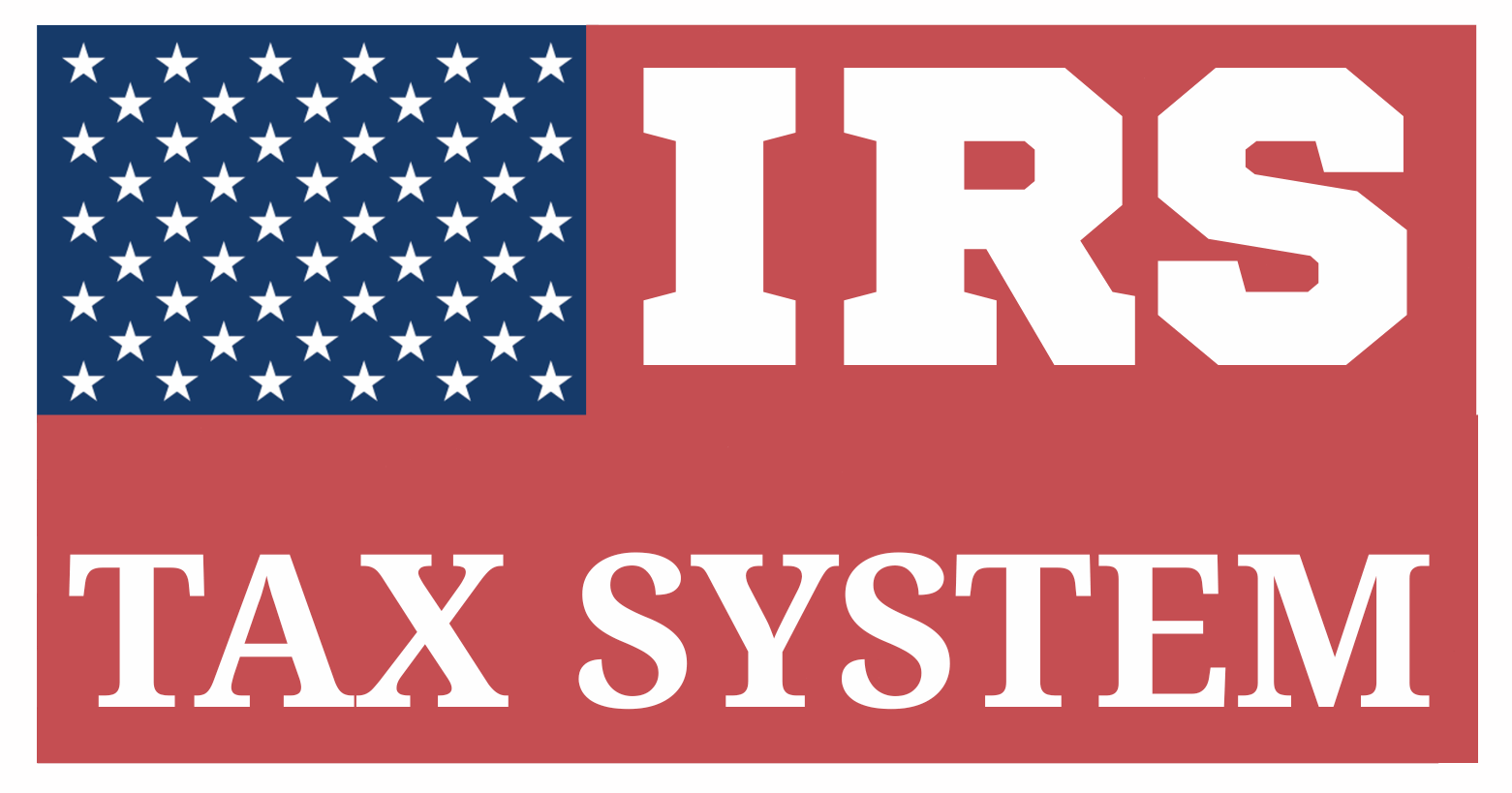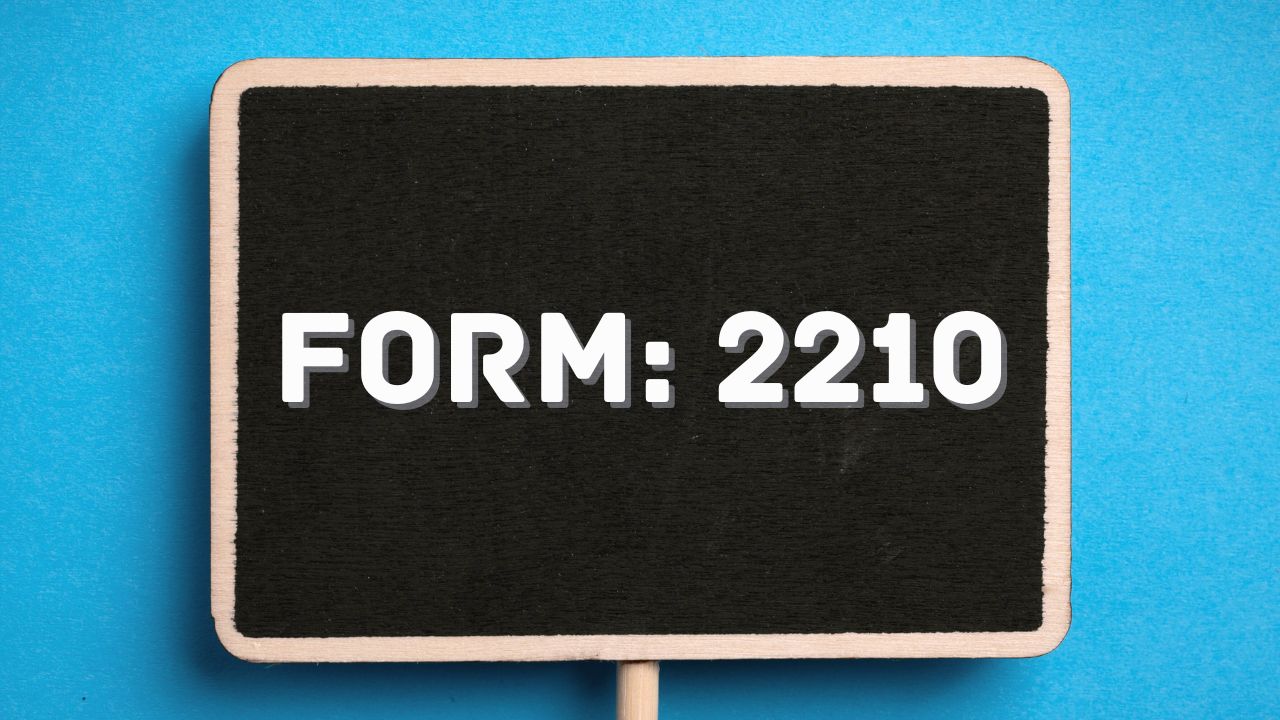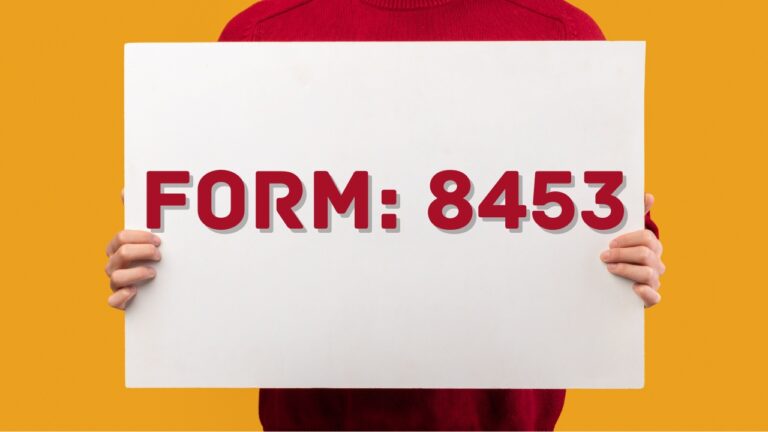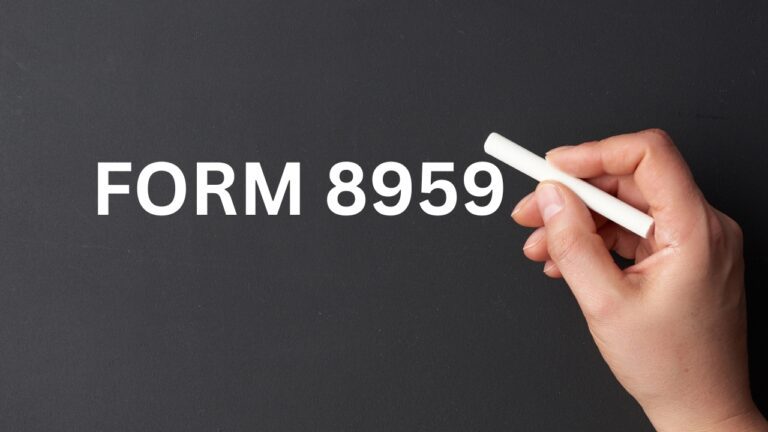Form 2210: Best Recap On Underpayment Of Estimated Tax
Table of Contents
Uncovering All The Information About Form 2210
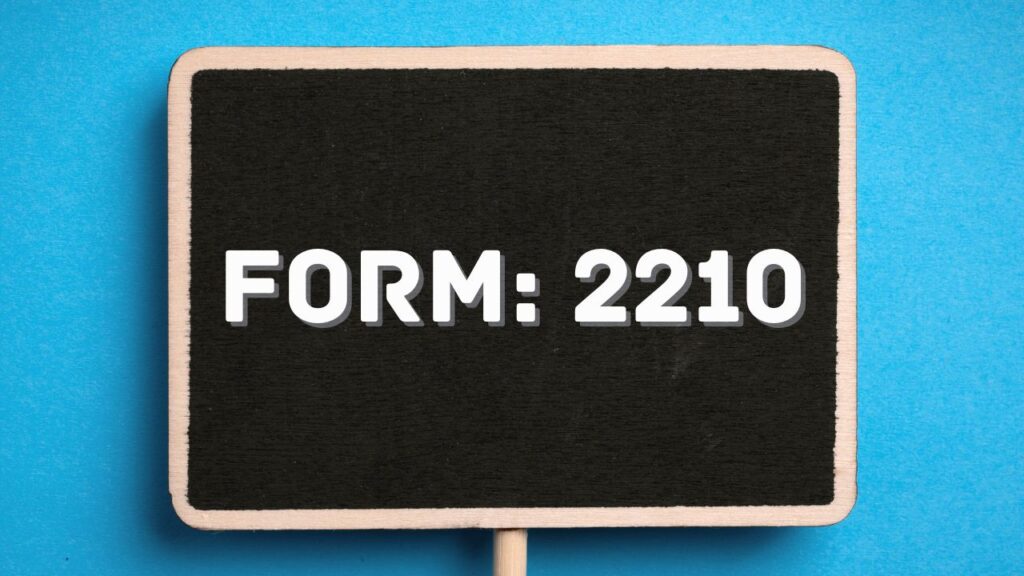
IRS Form 2210 is used by individuals, estates, and trusts to calculate and report a penalty for underpaying estimated taxes or withholding insufficient tax during the year. The U.S. tax system follows a pay-as-you-earn model, requiring taxpayers to make income tax payments periodically during the year rather than in a lump sum at filing time.
Who Must File Form 2210?
You must file IRS Form 2210 if you underpaid your estimated tax throughout the year and want to determine whether a penalty applies, reduce it, or request a waiver. This form serves both as a calculation tool and a penalty mitigation form for taxpayers who did not pay enough tax on a timely basis through withholding or estimated payments.
Specifically, you are required or may choose to file Form 2210 if any of the following situations apply:
1. You Owe a Penalty and Want to Calculate It Yourself
If you didn’t pay enough taxes during the year, the IRS may assess an underpayment penalty — but you can use Form 2210 to calculate it yourself and potentially reduce or eliminate it by annualizing income or claiming an exception:
- Manually calculate the penalty,
- Use a more accurate method based on your payment history,
- Include special payment timing (e.g., variable income),
then you must file Form 2210 and complete the necessary parts to compute the penalty.
2. You Qualify for an Exception or Waiver
If you are eligible to have the penalty waived due to special circumstances, you must file Form 2210 to request that waiver. This includes:
- Natural disasters or unforeseen events,
- Becoming disabled or retired during the year (after age 62),
- Other reasonable causes that prevented timely payments.
In these cases, Part IV of Form 2210 is used to state your claim and provide supporting details.
3. You Are Using a Special Computation Method
Form 2210 is used when you choose to determine your estimated tax payments based on an alternative schedule:
- The Annualized Income Installment Method (Schedule AI), or
- The Adjusted Seasonal Installment Method.
These methods are beneficial if your income was earned unevenly throughout the year — for example, if you received most of your earnings in the second half of the year or had a large one-time gain.
4. You Made Uneven or Late Estimated Payments
If you made estimated tax payments that were:
- Not equal across all four quarterly due dates,
- Made late (after the quarterly deadline),
You are required to file Form 2210 and use the regular method in Part III to compute the penalty because the short method in Part II doesn’t apply to your situation.
In summary, Form 2210 is required when the taxpayer wants more control over how the underpayment penalty is calculated or wishes to demonstrate that a penalty should not apply due to valid exceptions or uneven income patterns. If you are unsure whether you meet a penalty exception or need to provide supporting calculations, filing Form 2210 ensures proper documentation and may help reduce or eliminate the penalty.
Who Is Exempt from Filing IRS Form 2210?
Not all taxpayers who owe tax at the end of the year are required to file IRS Form 2210. The IRS provides safe harbor rules and exceptions that allow many individuals, estates, and trusts to avoid both the underpayment penalty and the requirement to file Form 2210.
You are exempt from filing Form 2210 if you meet any of the following conditions:
1. You Paid Enough Tax During the Year Under Safe Harbor Rules
You can skip filing Form 2210 if your combined withholding and estimated tax payments meet any of the following thresholds:
- 90% of your total tax liability for the current tax year, or
- Equal to 100% of the tax you owed for the prior year, as long as that return covered a full 12 months,
- 110% if your adjusted gross income (AGI) in the prior year exceeded $150,000 (or $75,000 if married filing separately).
These are referred to as the “safe harbor thresholds.” Meeting these thresholds means no penalty applies and no Form 2210 is needed.
2. You Had No Tax Liability Last Year
You are exempt from filing Form 2210 if:
- You had no tax liability for the prior tax year (your total tax on Form 1040, Line 24, was zero),
- You maintained U.S. citizenship or residency status throughout the full tax year, and
- Your previous year’s tax return was for a complete 12-month period.
This exemption is often applicable to new filers, students, or those with very low or no taxable income in the prior year.
3. You Had Withholding That Covered the Required Tax
If your entire tax liability was satisfied through wage withholding, and it was:
- Properly distributed throughout the year (proportional and timely), and
- You satisfied either the 90% of current-year tax liability rule or the 100% (or 110%, if applicable) of prior-year tax liability rule,
then you are exempt from filing Form 2210. The IRS generally treats income tax withheld from wages and other payments as if it were paid in equal installments over the course of the year, even if the actual withholding occurred unevenly.
4. You Owe No Underpayment Penalty
Even if you had a tax balance due when you filed, Form 2210 is not required if:
- Your underpayment was small enough not to trigger a penalty,
- You qualify for one of the automated exceptions, and
- You are not requesting a waiver or using a special calculation method (e.g., annualized income).
In this case, the IRS does not need Form 2210, and you can simply file your tax return as usual.
5. The IRS Will Calculate the Penalty for You
Even if you do owe a penalty, you are not required to file Form 2210 if:
- You are not requesting a waiver,
- You are not using the annualized income or seasonal method, and
- You are content to let the IRS compute the penalty and notify you by mail.
Many taxpayers allow the IRS to make the calculation if they don’t meet an exception but also don’t want to go through the form themselves.
If your tax payments met IRS safe harbor thresholds, or if you had no tax liability last year, you are generally exempt from filing Form 2210. This means you do not need to calculate or report any underpayment penalty, and the IRS will not charge you. However, if you want to reduce or eliminate a potential penalty using a waiver or special calculation method, filing Form 2210 is necessary.
Form 2210 Safe Harbor Rules
The IRS provides safe harbor rules to protect taxpayers from underpayment penalties, even if they owe taxes when filing their return. These rules are designed to account for reasonable and predictable payment behavior, especially when a taxpayer has consistent income year to year.
If you meet a safe harbor threshold, you won’t owe a penalty for underpaying estimated taxes, and you may not need to file Form 2210 at all.
What Are the Safe Harbor Rules?
You’re protected from the underpayment penalty if your total tax payments (withholding and estimated payments combined) during the year meet at least one of the following safe harbor thresholds:
1. 90% of Current Year Tax Liability
You can typically avoid an underpayment penalty if you’ve covered at least 90% of your current year’s total tax through withholding or estimated payments, even if there’s still a balance due at filing.
2. 100% of Prior Year Tax Liability
If your adjusted gross income (AGI) was $150,000 or less (or $75,000 or less if married filing separately), You can typically avoid underpayment penalties by making sure you’ve paid at least 90% of your total tax for the current year or 100% of your prior year’s tax liability (or 110% if your prior year’s AGI was over $150,000), whichever is smaller.
3. 110% of Prior Year Tax Liability (High-Income Taxpayers)
If your prior year’s adjusted gross income (AGI) exceeded $150,000 (or $75,000 if married filing separately), you’re required to pay at least 110% of the previous year’s total tax liability to avoid an underpayment penalty.
Important: These rules apply regardless of the actual amount you owe with your return. You could owe a large balance and still avoid a penalty if you met the safe harbor rule.
Example 1: 90% Current Year Rule
- Your 2024 total tax liability is $12,000.
- You paid $10,800 through withholding and estimated payments, which equals 90% of your $12,000 total tax liability—this generally exempts you from an underpayment penalty.
- Even though you still owe $1,200, you won’t owe a penalty because you met the 90% rule.
Example 2: 110% Prior Year Rule
- Your 2023 AGI was $180,000, and your 2023 total tax liability was $20,000.
- In 2024, you paid $22,000 in estimated payments (110% of $20,000).
- You’re protected from penalties, even if your 2024 tax liability is $24,000.
Comparison Table: Safe Harbor Thresholds
| Condition | AGI Threshold | Safe Harbor Payment |
| General Taxpayer | AGI ≤ $150,000 | 100% of prior year’s tax |
| High-Income Taxpayer | AGI > $150,000 | 110% of prior year’s tax |
| All Taxpayers | Any AGI | 90% of current year’s tax |
When Safe Harbor Rules Protect You
You are automatically protected from the penalty if you:
- Paid sufficient tax under a safe harbor rule,
- Didn’t intentionally delay or underpay your taxes,
- Didn’t have major late-in-the-year income surges without adjusting estimated payments.
When Safe Harbor Doesn’t Apply
You are not protected by the safe harbor rules if:
- You didn’t meet any of the three thresholds,
- You intentionally underpaid to defer cash flow,
- You had irregular or seasonal income and failed to use the annualized income method to adjust estimated payments.
The Form 2210 Safe Harbor Rules are a crucial safeguard that helps taxpayers avoid underpayment penalties as long as they follow IRS guidelines for estimated or withheld payments. Meeting one of these safe harbor thresholds—90% of your current year’s tax, or 100% (or 110%) of your prior year’s tax—helps ensure you’re not penalized for underpayment and allows you to file your return confidently.
Form 2210 Instructions
IRS Form 2210 is organized into four main parts and one optional schedule (Schedule AI), each serving a specific purpose in calculating, reducing, or requesting a waiver for the underpayment of estimated tax. The form is designed for individuals, estates, and trusts who did not pay enough tax during the year and need to report or address a penalty.
Part I – Required Annual Payment
Purpose: Determines whether the taxpayer actually owes a penalty and, if so, whether they must file Form 2210.
This section compares:
- The total tax liability for the year,
- The total of what you’ve already paid via withholding and estimated tax instalments,
- Meeting IRS safe harbor thresholds—like paying 90% of this year’s tax or 100% (110% for higher incomes) of last year’s tax—can help avoid penalties.
Depending on your answers, you will check one of the boxes (A through D):
- Box A: You meet a safe harbor threshold — no penalty required.
- Box B: IRS will compute any penalty — no need to fill the rest.
- Box C: You qualify for the annualized income method — must file Schedule AI.
- Box D: You’re requesting a waiver — complete Part IV.
If none of the boxes apply, you must continue with penalty calculations in Part II or III.
Part II – Short Method for Figuring the Penalty
Purpose: Provides a simplified method to calculate the underpayment penalty only if you meet specific criteria.
You can use this method only if:
- You made equal estimated payments on each of the four due dates,
- You are not using the annualized income method (Schedule AI),
- You’re not requesting a waiver.
This section requires basic information:
- Total underpayment amount,
- Number of days late for each quarter,
- Applicable interest rates (updated quarterly by the IRS).
The short method is quicker and easier but only applies in uniform situations.
Example
A salaried taxpayer who made four equal estimated payments on time but still underpaid slightly due to a small unexpected bonus can often use this section.
Part III – Regular Method for Figuring the Penalty
Purpose
Allows a more accurate, quarterly-based penalty calculation when payments were made unevenly or late.
You must use this part if:
- You made unequal estimated payments,
- Your payments were late or missed altogether,
- You want to allocate withholding unevenly,
- You’re filing Schedule AI for annualized income.
This section involves:
- Divide the tax year into four payment periods—ending on April 15, June 15, September 15, and January 15 of the following year—as recognized by the IRS.
- Computing cumulative underpayment for each quarter.
- Applying the daily interest rate to each underpaid period using IRS-published penalty rates.
This is the most mathematically involved part of the form and often requires attaching supporting schedules or worksheets.
Part IV – Penalty Waiver Request
Purpose
Gives taxpayers a way to request a partial or full waiver of the underpayment penalty due to reasonable cause.
Common waiver reasons:
- Retirement (after age 62) or disability that prevented proper tax payments.
- Casualty events, like floods, fires, or hurricanes.
- Serious illness, family emergencies, or financial hardship.
- First-time entrepreneurs or those affected by COVID-19-related delays (if still applicable in current guidance).
You must provide a written explanation describing the circumstances and, if applicable, attach proof or documentation (such as hospital bills, disaster declarations, etc.).
This section reflects IRS flexibility for genuinely affected taxpayers.
Schedule AI – Annualized Income Installment Method (Optional Attachment)
Purpose
To help taxpayers whose income was received unevenly during the year — such as freelancers, seasonal workers, or investors — avoid penalties that assume steady, equal income.
Rather than presuming income was earned uniformly over the year, this method reflects when the income was actually received:
- Breaks the year into four segments: Jan–Mar, Jan–May, Jan–Aug, and Jan–Dec.
- You must compute your total actual income, deductions, and credits for each specific period.
- Computes quarterly liability based on actual income received, not annualized totals.
Schedule AI is often advantageous for:
- Real estate professionals,
- Gig economy workers,
- Self-employed consultants,
- Taxpayers with year-end capital gains or stock bonuses.
Once completed, Schedule AI flows into Part III for detailed penalty computation.
Illustrative Structure Summary
IRS Form 2210 Structure:├── Part I: Do you owe a penalty? (Safe harbor test)├── Part II: Use short method if payments were equal and timely├── Part III: Use regular method for uneven or late payments├── Part IV: Request waiver if underpayment was due to hardship or special reason└── Schedule AI: Use this if income was earned unevenly throughout the yearConclusion
IRS Form 2210 is not just about calculating a penalty — it’s a comprehensive tool for:
- Protecting compliant taxpayers from unfair charges,
- Allowing flexibility in how tax payments are analyzed,
- Supporting waivers for those who truly deserve relief.
The form’s structure accommodates everything from simple miscalculations to complex financial lives involving irregular income and hardship events. Understanding each part ensures that you file accurately and take advantage of every possible option to minimize penalties.
Example Scenario:
Taxpayer: Sarah, a freelance graphic designer
Filing Status: Single
Tax Year: 2024
Final Tax Liability (Line 24, Form 1040): $20,000
Federal Income Tax Withheld (from W-2 and 1099s): $2,000
Estimated Payments Made:
- Q1 (April 15, 2024): $2,000
- Q2 (June 15, 2024): $1,000
- Q3 (September 15, 2024): $1,000
- Q4 (January 15, 2025): $1,000
Total Paid: $7,000
Underpayment: $20,000 – $7,000 = $13,000
Step-by-Step Form 2210 Use
Part I – Do You Owe a Penalty?
Sarah checks whether she qualifies for safe harbor:
- Prior year’s tax liability: $12,000
- 100% of $12,000 = $12,000
- She only paid $7,000 → underpaid
She does not qualify for safe harbor, so penalty applies.
She checks Box C because her freelance income is seasonal and irregular, and she wants to use Schedule AI (Annualized Income Installment Method).
Part II – Short Method (NOT Eligible)
Since Sarah’s estimated tax payments were not evenly distributed, she must use the regular method instead of the short method.
Part III – Regular Method (Penalty Calculation)
In this method, each underpayment is analyzed quarter by quarter. Sarah’s underpayments are:
| Quarter | Due Date | Required Payment (25% of $20,000) | Actual Payment | Underpaid Amount |
| Q1 | Apr 15, 2024 | $5,000 | $2,000 | $3,000 |
| Q2 | Jun 15, 2024 | $5,000 | $1,000 | $4,000 |
| Q3 | Sep 15, 2024 | $5,000 | $1,000 | $4,000 |
| Q4 | Jan 15, 2025 | $5,000 | $1,000 | $4,000 |
Now she applies interest rates (e.g., 8% annually, prorated by days) to each underpaid amount for the number of days it was outstanding. The IRS publishes exact interest rate tables quarterly.
Example:
- $3,000 underpaid from Q1 was late by ~275 days →
Penalty = $3,000 × 8% × (275 ÷ 365) ≈ $180.82
She repeats this for each quarter and adds all penalties together.
Let’s say the total penalty = $612.49
Part IV – Waiver (Not Used in This Example)
Sarah isn’t requesting a waiver — she’s just calculating the correct penalty using Schedule AI.
Schedule AI – Annualized Income Method
Sarah earned most of her freelance income in Q3 and Q4, so she uses Schedule AI to allocate income more accurately:
| Period Ending | Income | Taxable Income | Calculated Tax |
| March 31 | $5,000 | $3,500 | $350 |
| May 31 | $15,000 | $12,000 | $1,200 |
| Aug 31 | $35,000 | $30,000 | $3,800 |
| Dec 31 | $60,000 | $52,000 | $7,000 |
Now, she matches this to her actual payments. Since income was low in Q1 and Q2, the expected payments for those periods were also low, and she likely won’t owe a penalty for those periods.
After recomputing based on actual seasonal income, the total penalty may drop from $612.49 to around $150 or even $0.
Summary of This Example
| Item | Amount |
| Total Tax Liability | $20,000 |
| Total Estimated + Withheld Taxes | $7,000 |
| Underpayment | $13,000 |
| Penalty (using regular method) | $612.49 (initial) |
| Penalty (after using Schedule AI) | $150 (or $0) |
This example shows how a freelancer like Sarah—who earns most income late in the year—can avoid or reduce underpayment penalties using Form 2210 and Schedule AI. Even though she underpaid taxes early in the year, using the annualized income method matched her payments to her actual earnings timeline and minimized penalties.
IRS Penalty Rates for Underpayment of Estimated Tax
What Is the Underpayment Penalty?
The IRS underpayment penalty is not a flat fee — it is calculated like interest on the amount of estimated tax that was underpaid or paid late. It applies to:
- Individuals (Form 2210),
- Estates and trusts (also Form 2210),
- Corporations (Form 2220).
This penalty is designed to encourage timely estimated payments throughout the year — not just at filing time.
How Is the Penalty Rate Determined?
The IRS uses the federal short-term interest rate, as published quarterly, and adds a fixed margin:
- For individuals:
Underpayment Penalty Rate = Federal short-term rate + 3%
For example:
If the federal short-term rate is 5%, the underpayment interest rate becomes 8% annually (5% plus a 3% surcharge).
Interest accrues daily using compound interest and is calculated based on the number of days the tax remains unpaid:
- The amount underpaid,
- The number of days the payment is late,
- The quarterly rate in effect during that time.
IRS Underpayment Penalty Rates by Quarter – 2024 & 2025
| Period | Federal Short-Term Rate | Underpayment Penalty Rate |
| Q1 2024 (Jan–Mar) | 5% | 8% |
| Q2 2024 (Apr–Jun) | 5% | 8% |
| Q3 2024 (Jul–Sep) | 5% | 8% |
| Q4 2024 (Oct–Dec) | 5% | 8% |
| Q1 2025 (Jan–Mar) | 5% | 8% (projected) |
Note: The IRS adjusts these rates quarterly based on current interest rate trends. The latest rates can always be found in IRS Revenue Rulings published on IRS website.
How the Penalty Is Calculated
The IRS applies the penalty as interest using this basic formula:
Penalty = Underpaid Amount × Penalty Rate × (Number of Days Late ÷ 365)
Example Calculation
Let’s say:
- You underpaid $3,000 in Q1,
- It was late by 120 days,
- The penalty rate for the period was 8%.
Penalty = $3,000 × 0.08 × (120 ÷ 365) ≈ $78.90
If underpayment occurred over multiple quarters with different rates, each quarter’s amount and duration is calculated separately.
When Do the Rates Change?
IRS underpayment rates change every calendar quarter, effective:
- January 1
- April 1
- July 1
- October 1
Taxpayers need to apply the appropriate rate based on:
- When the underpayment occurred, and
- How long the amount was unpaid.
Notes
- Interest on underpaid taxes compounds daily, meaning even brief delays in payment can lead to noticeable increases in the total amount owed.
- Tax software like TurboTax, TaxAct, and professional software can automatically calculate these penalties.
- If your total tax due after subtracting withholding and credits is less than $1,000, you generally won’t be charged an underpayment penalty.
- Using Schedule AI on Form 2210 allows you to match payments to income timing, which can reduce or eliminate penalties.
Requesting a Penalty Waiver – Form 2210 (Part IV)
What Is a Penalty Waiver?
A penalty waiver allows taxpayers to avoid the IRS underpayment penalty if they had reasonable cause for underpaying estimated taxes or were affected by special circumstances (e.g., natural disaster, illness, retirement, etc.).
When you qualify, you must complete Part IV of IRS Form 2210 to formally request this waiver.
When Can You Request a Waiver?
The IRS might waive the underpayment penalty under the following circumstance:
1. Casualty, Disaster, or Other Unusual Circumstance
- You experienced natural disasters, medical emergencies, death of a close family member, or unforeseen hardships that prevented timely payments.
- You need to demonstrate that applying the penalty would result in an unfair or unjust outcome.
2. Retired or Disabled Taxpayers (After Age 62)
- You turned 62 or became permanently and totally disabled during the tax year or the prior year.
- The underpayment resulted from a justifiable reason and not intentional disregard of tax rules.
You do not need to show financial hardship, but you must prove reasonable cause.
How to Request the Waiver (Step-by-Step)
Step 1: Check Box D in Part I of Form 2210
This tells the IRS that you are requesting a waiver and will complete Part IV.
Step 2: Fill Out Part IV – Request for Waiver of Penalty
This section asks you to explain your circumstances. While Part IV does not require full details on the form itself, you must:
- Write “Waiver Requested” in the margin next to Part II, Part III, or Schedule AI (whichever you used).
- Attach a separate statement explaining:
- What caused the underpayment,
- When the issue began and ended,
- Why you believe the situation was out of your control,
- Why you think a penalty is unfair under your circumstances.
Be specific: Mention exact dates, amounts affected, and provide documentation if possible (e.g., medical records, FEMA notice, retirement letter).
Step 3: Compute the Penalty with and without Waiver
- You may still need to calculate the penalty (Part III or Schedule AI), but you’ll subtract the portion you’re asking the IRS to waive.
- If you want the IRS to calculate the penalty instead, check Box B in Part I.
Step 4: Attach Supporting Documentation
If your request is due to:
- Disaster: Attach FEMA notice or government order.
- Illness or disability: Include medical documents, physician letters, or insurance records.
- Retirement: Provide date and proof of retirement.
- Other hardship: Submit any bills, letters, or bank statements showing the impact.
Deadline to Request a Waiver
You must submit Form 2210 and your waiver request by the original due date of your return (typically April 15, or October 15 with extension).
Conclusion
IRS Form 2210 ensures that taxpayers who underpay their taxes during the year are properly assessed a penalty, while also giving them a chance to avoid or reduce it when circumstances justify. If your income fluctuates, or you made uneven or late payments, this form can help you avoid unnecessary penalties — but only if filed correctly and on time.
Frequently Asked Questions (FAQs)
Is Form 2210 mandatory?
Not always. If you don’t owe a penalty or meet safe harbor rules, you can skip it. Otherwise, it’s required if you’re requesting a waiver or using a special calculation.
Can I use Form 2210 if I had uneven income?
Can use Schedule AI (Annualized Income Installment Method) to demonstrate how your income was received unevenly throughout the year and potentially reduce or avoid underpayment penalties.
What happens if I skip Form 2210 but owe a penalty?
The IRS typically calculates the underpayment penalty automatically and sends a notice if you owe.
Can tax software handle Form 2210?
Yes. Most tax preparation software includes Form 2210 and will guide you through the questions.
